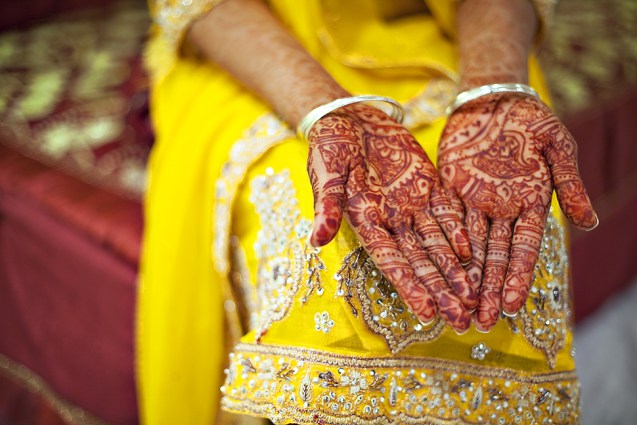
05 Feb From Henna to Honeymoon
Henna (also known as Hina or Mehndi) has been used as a cosmetic for over 6,000 years in the Arabian Peninsula, the Near East, South Asia, North Africa, and the Horn of Africa. It is coincidentally also the region where there are significant Muslim populations. Henna is a temporary dye that has been used on brides to dye hands, feet and sometimes hair.

Photo by Tela Chhe available under a Creative Commons Attribution-license
Henna is an art form used to decorate the bride and make her look extra beautiful. A Henna party usually takes place a day or more before the wedding. Traditionally it has been an all women’s affair, but lately, in some cultures men are also becoming a part of the celebration. Both the event and the art form is growing in sophistication and innovations.
Although as we mentioned this is a tradition in so many regions, the history behind it was to ward off evil spirits and make sure the new couple get off to and happy start.

Photo by amrufm 3 available under a Creative Common Attribution-license
In Middle Eastern culture, the bride may wear a green dress to the henna party. The bride and groom while seated have a white cloth elevated above their heads. A ceremony takes place while asking God to ward off evil spirits. and to ensure the happiness of the new couple.
The Henna party could be considered the Arab or South Asian version of a bachelorette party. The bride, her family, friends gather and a henna artist paints exquisite designs on the bride. There is lots of food accompanied with music and dancing.

Photo by Rizwan Sagar available under a Creative Commons Attribution-license
The henna artist will usually create simple or complex geometric patterns. Islamic art forbids depiction of any living form including humans and animals, but the intricate designs can still be amazing. Once the henna paste is applied, the bride has to leave it for several hours without it getting disturbed, so the actual stain that develops from this “negative” can become dark. This is a great opportunity for the bride to be pampered by family and friends.

Photo by Robert Benner available under a Creative Commons Attribution-license
As we have covered in other posts, Muslim weddings tend to be large multi-day events. Muslims traverse so many nations and cultures, there are specifics in each which are unique. The Henna party is usually preceded by an engagement party, and followed by Katb el-Kitab (The Marriage Contract), the Zaffa (Wedding Entrance) where the bride and groom make a grand entrance accompanied by drummers. “Cutting the Cake” and the honeymoon are more recent cultural additions, but they just go to show that from the henna to the honeymoon, weddings are universal.



No Comments